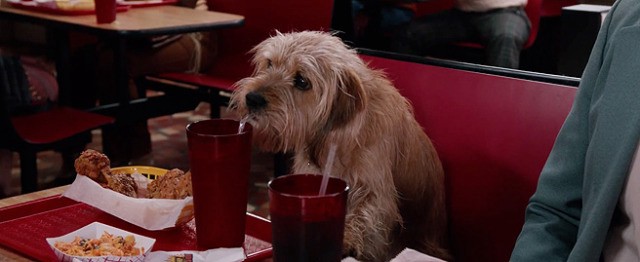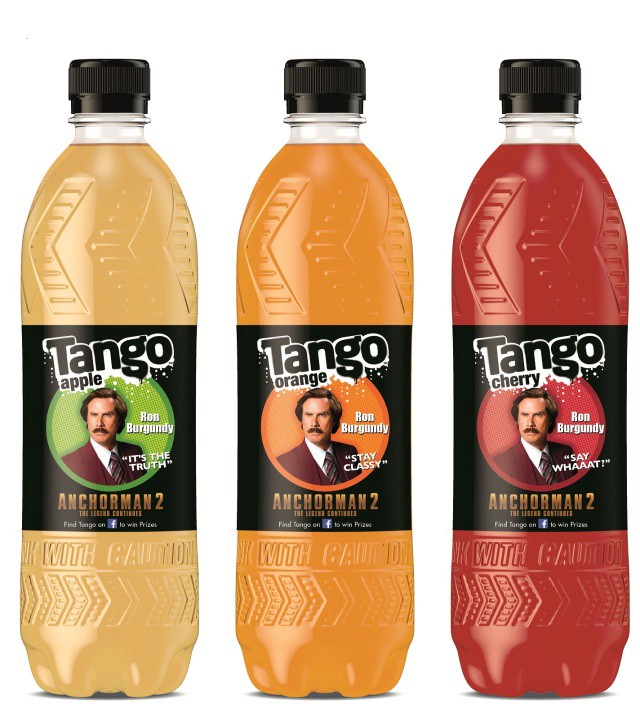
“Black Friday” sales have spilled over into Thanksgiving Day. Amazon just announced that it wants to set the stage for the robot war by piloting commodity-delivery drones to your home. The holiday shopping season has literally become a deadly event. Consumer culture is out of control and omnipresent, rampantly breaking through boundaries of common sense, private space, and basic human decency.
Yet on the everyday, experiential scale, consumer culture seems, more than ever before, like no big deal. Perhaps we have, for better or worse, collectively accepted it as an inevitable part of living.
We expressed shock that the NSA was data-mining its citizens without any evidence of consistent legal parameters, yet only the occasional TED speaker is concerned that similar practices persist on behalf of marketers who feed from the social media we volunteer our lives to. Public schools are looking to private sponsors to fill in the funding gaps left by austerity. Bookshelves are stocked with arguments that our purchases ‐ not our civic engagement, social awareness, or self-determination ‐ have become the major constitutive factor in developing our individual sense of self. To these, we don’t really seem to mind.
However, one place that blatant product-hawking is held accountable, in which peddling is met with a rattle of dismissal and rejection rather than tacit acceptance, is decent movies.
Until now.
Movies as Product Delivery Systems
The common wisdom has been that blatant product placement in films distracts from the integrity of the storytelling and art of filmmaking. The feeling of being sold to disrupts the suspension of disbelief demanded by most narrative films, and can create a relationship between audience and screen that feels disingenuous and malevolently manipulative. Movies only “get away with it” if they do so in a winking fashion.
But the reality, naturally, is much more complicated than the common wisdom. Movie studios, which for much of the history have been owned by conglomerates involved in many trades other than film, have deliberately placed choice commodities in movies for quite some time (as Scott Beggs explained). And this practice doesn’t essentially contradict anything about commercial filmmaking.
Product placement turns movies into congealed labor ‐ a commodity used to sell other commodities. And movies themselves both utilized and helped formulate the language of advertising. Movie stars, genres, and even auteurs like Hitchcock cultivate expectations and construct meaning through the logistics of a brand identity. Think about how invested mainstream moviemaking is in the business of advertising the next time you click through an ad in order to watch their trailer.
Yet when products enter a film narrative, a line has been crossed. Even in the most aggressively commercial of films ‐ whether it’s Superman launching into the air in front of a Sears or James Bond driving a Ford Focus in lieu of an Aston Martin ‐ there exists not only a prevailing notion that product placement contradicts the escapist narrative experience of conventional filmgoing, but that product placement is an ill-will-building distraction when it doesn’t seem natural.
But what feels at any given moment to be the “natural” state of advertising is key here. Think about the last time you saw a fictional character using a Mac computer with the logo covered up. Strangely enough, that is more distracting than if the Apple logo roamed free, because the legacy of Ashton Kutcher Steve Jobs has so thoroughly occupied our everyday experience of technology that the silver apple itself is the scenic equivalent to wallpaper. What seems natural is always in a state of flux, a carefully delivered campaign whose reach extends to the degree that we accept (or hardly notice) it.
Natural, in short, is never neutral.
‘Anchorman 2’ and Reverse Product Placement
And that’s why the extensive viral and cross-promotional marketing of Anchorman 2: The Legend Continues might be more innovative than it initially seems. As Nathan Adams explains, the film has parlayed the Channel 4 News Team ‐ whose first venture is enthroned on most dorm room DVD shelves ‐ towards the promotion of an array of products both inside and outside the film itself:
“Not only is Will Ferrell appearing as his Ron Burgundy character in a series of ads for Dodge Durango, but the film also has endorsement deals signed with companies like Miller Brewing, Ben & Jerry’s, and Hot Topic. And the coup de grâce is probably the deal they have going with Jockey, where not only has the company made a pair of retro-style briefs to be worn by Paul Rudd’s Brian Fantana character during an in-movie commercial, but where they’ve also started manufacturing and marketing those same retro-briefs to be sold to the public [via Screen Crush]. Do you ever remember another time when you were able to buy the same pair of underwear as seen in your favorite comedy of the year?”
What’s striking about the exceeding cross-promotion for Anchorman 2 (in both conventional and viral ads) is that it seems to have entirely replaced direct advertising for the film itself. Having not yet seen it, I have no way of knowing whether the movie actually incorporates any of these products besides Paul Rudd’s “retro-briefs” (a moment that potentially verges more on Wayne’s World territory than, say, The Island). But if the film utilizes relatively little product placement, and presents its few niche products solely in a winking, self-reflexive manner, then Anchorman 2 will have achieved something altogether different in the evolving conflict between advertising and filmmaking: reverse product placement.
And as annoying as those Durango ads can be, this might be good for moviegoing.
Product placement in films typically produces a symbiotic relationship with straightforward ads presented elsewhere: a Heineken commercial helps promote Skyfall, and Bond drinks a Heineken in the movie. This cyclical logic functions by virtue of the fact that the Heineken commercial is actually promoting (at least) two products: Heineken and Skyfall. But if television commercials are doing the double duty of advertising films with familiar properties (sequels, franchises, remakes, adaptations), then to what degree can these ads actually replace direct ads ‐ in the form of trailers and commercials ‐ for the film?
If the primary complaint about the relationship between advertising and filmmaking is the conspicuous placement of products in films, then a close second is the way that films themselves are advertised. Roger Ebert likely wielded the biggest megaphone on this point, regularly voicing that movie trailers reveal too much information about the film itself, contributing to both the overcalculating tendencies of a risk-averse industry and a spectatorship anathema to the possibility of surprise. But if commercials for other products do the advertising for films, then reverse product placement can perhaps solve both of these problems: the ad/brand/product can be used to advertise the film (while not necessarily incorporated into the film), and in return promotional efforts for the film itself won’t reveal every damn joke and plot point.
Such a practice, obviously, only works for established properties. But franchises, sequels, and other tentpole works often suffer most in the expectations department ‐ not only because they are necessarily derivative, but because the money behind them dictates that everything in the film’s arsenal be used to promote it in order to make an increasingly timid Hollywood happy. While one can easily grow tired of these cross-promotional efforts, they have no essential bearing on the film itself. Reverse product placement, then, offers Hollywood something that has long been missing: the potential for the actual movie to feel somewhat fresh and surprising when it finally hits screens.
Final Thoughts
Fights for living wages, better working conditions, and not dying because of Black Friday need our activism and attention. But in contrast to previous mobilized movements against and critiques of consumer culture, industrial problems have become largely disassociated from the clutter of ads that pervade our lives. We’ve acquiesced to ad culture as the art of getting by. Perhaps many of us have become not only more shrewd in knowing when we’re being targeted by marketers, but also more pragmatic about the “nature” of advertising: that nothing in culture, whether or not it has any commercial investment or seeks profit, can be pure and free from its grasp.

As frustrating as it is that everything can be reduced to an ad, there’s also a freeing pragmatism to this admission. Rock musicians, arguably the figures most susceptible to critiques of selling out through commercialism, have now embraced reverse product placement as an integral part of a business in which concert and music sales are ever-dwindling sources of revenue. We’ve also returned to the era of single-sponsor programming in supporting the (often DIY) podcasts we listen to. And I enjoy the privilege of writing the words you’re reading right now because of the ads bordering this post.
The language of advertising as an art of getting by has dramatically shaped contemporary filmmaking. Notable directors like Errol Morris, Wes Anderson, Martin Scorsese, Sofia Coppola, and David Lynch have turned to commercials to fund their projects, get on with life in between projects, or even (gasp) because they simply enjoy making them. In so doing, they’ve transformed commercialism itself into a practice of considerable artistic value. And for independent filmmakers, the art of pitching has become common knowledge, as manufacturing a trailer before producing the film is the non-mainstream rule of thumb in the Kickstarter era. But perhaps most cynically, Hollywood studios regularly soften the “risk” of even the highly anticipated tentpole sequel with extensive cross-promotion. One should endure the next Ron Burgundy car ad with the knowledge that the prospect of Anchorman 2 was once rejected by Hollywood.
So if we’re honest about the fact that the language of advertising exceedingly imbues all aspects and objects of movie culture, then at least reverse product placement can leave the movie itself to be appreciated for once.
